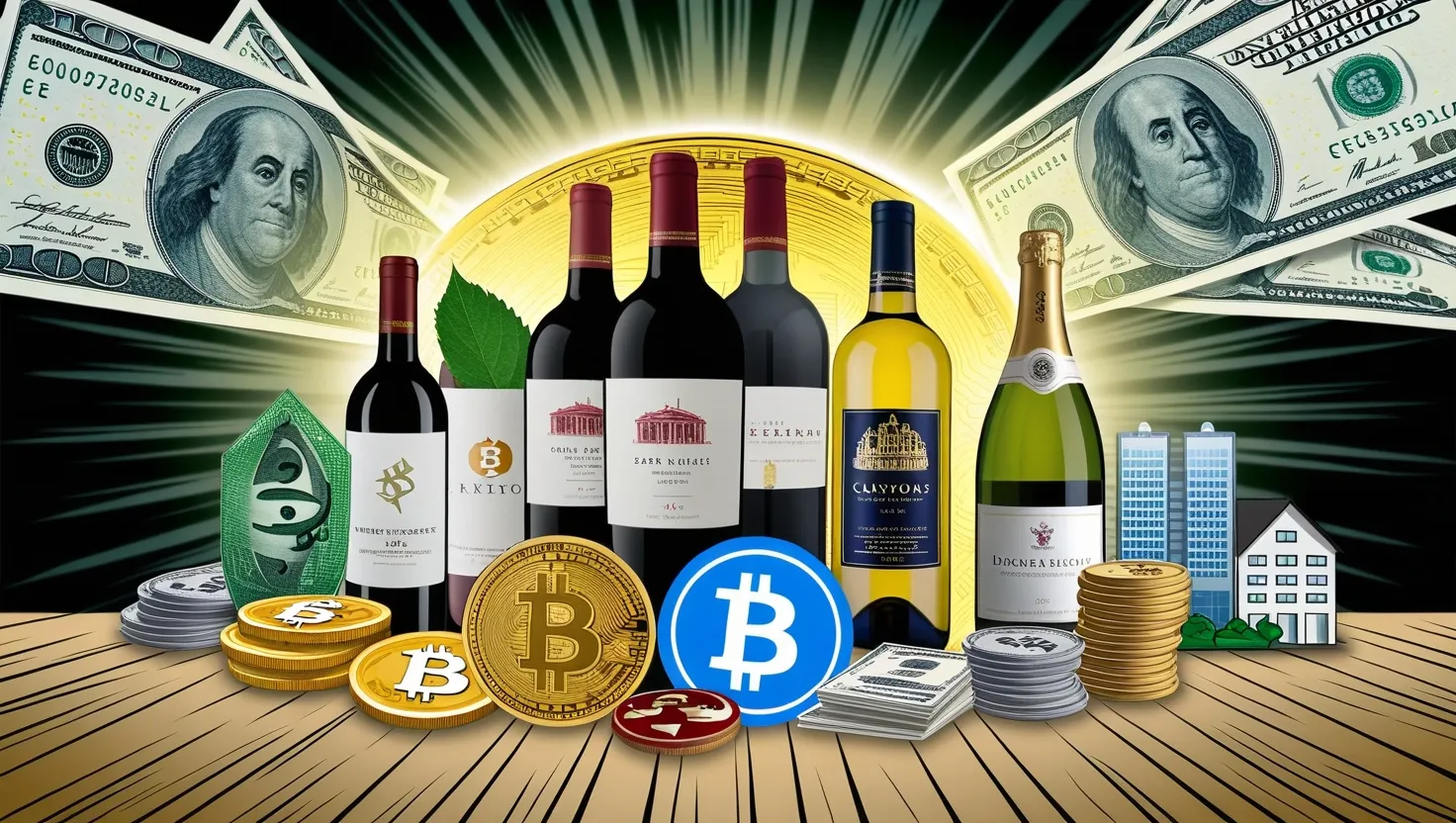In the face of hyperinflation, where the value of money dwindles at an alarming rate, traditional investment strategies often fall short. This is a time when innovative and unconventional financial tactics become crucial for individuals and businesses aiming to protect their wealth. Here, we delve into some of the lesser-known methods people use to preserve value when traditional financial systems are in chaos.
Investing in Unusual Tangible Assets
During periods of hyperinflation, tangible assets that retain their value or even appreciate can be a lifeline. While gold and real estate are well-known hedges, other unusual assets have proven their worth. For instance, art and collectibles have historically performed well in inflationary environments. The value of art, particularly from renowned artists, tends to increase over time and can serve as a store of value when currencies are devaluing rapidly.
Another unconventional asset is fine wine. Wine, especially rare and vintage varieties, can appreciate significantly over time and is less correlated with traditional financial markets. This makes it an attractive option for those seeking to diversify their portfolios during economic crises.
Alternative Currencies and Digital Assets
In the era of digital finance, alternative currencies such as cryptocurrencies have emerged as potential hedges against hyperinflation. Cryptocurrencies like Bitcoin and Ethereum are not tied to any specific country’s economy and can provide a safe haven when traditional currencies are losing value. However, it’s important to note that cryptocurrencies are highly volatile and should be approached with caution.
For example, during the hyperinflation crisis in Venezuela, many citizens turned to Bitcoin as a way to protect their savings. The decentralized nature of cryptocurrencies made them an attractive alternative to the rapidly devaluing Venezuelan bolivar.
International Diversification
Diversifying investments internationally is another strategy to mitigate the effects of hyperinflation. By investing in stocks, bonds, or real estate in countries with stable economies, individuals can reduce their exposure to domestic economic turmoil. This approach is particularly effective because economic cycles in different countries often do not align, providing a buffer against inflation in one’s home country.
For instance, during the hyperinflation in Zimbabwe, investors who had diversified their portfolios into international markets, such as the U.S. or European stock markets, were better protected against the economic downturn.
Real Estate Investment Trusts (REITs)
Real estate has long been a staple in inflation-hedging strategies, but Real Estate Investment Trusts (REITs) offer a more accessible and liquid option. REITs allow individuals to invest in real estate without directly owning physical properties. Since rents and property values often increase with inflation, REITs can provide a steady income stream and capital appreciation.
In countries experiencing hyperinflation, such as Argentina, REITs have been a popular choice for local investors seeking to protect their wealth. These investments can be particularly beneficial because they are often denominated in foreign currencies or indexed to inflation, thereby maintaining their purchasing power.
Treasury Inflation-Protected Securities (TIPS)
While traditional bonds suffer during inflationary periods, Treasury Inflation-Protected Securities (TIPS) are designed to adjust their principal and interest payments based on inflation rates. This makes TIPS an attractive option for investors looking to preserve the real value of their investments.
For example, in the United States, TIPS have been a popular choice during periods of rising inflation. These securities ensure that the investor’s returns keep pace with inflation, protecting the purchasing power of their investments.
Inflation Swaps and Linked Bonds
For more sophisticated investors, financial instruments like inflation swaps and inflation-linked bonds offer advanced hedging strategies. Inflation swaps allow investors to exchange a fixed cash flow for a cash flow that is indexed to inflation, providing a hedge against unexpected increases in inflation.
Banks and financial institutions often use these instruments to manage their inflation risk. For instance, during the European sovereign debt crisis, some banks used inflation swaps to protect their portfolios from the potential inflationary impacts of monetary policy decisions.
Historical Examples
Historical examples provide valuable insights into how people have adapted to hyperinflation. In Weimar Germany during the 1920s, hyperinflation led to the collapse of the German mark. In this period, people turned to alternative forms of currency, such as foreign currencies and even commodities like coal and potatoes, to conduct transactions.
In more recent times, during the hyperinflation in Venezuela, the government introduced a new currency, the Sovereign Bolivar, which was pegged to a cryptocurrency called the Petro. This move was an attempt to stabilize the economy, but it also highlighted the desperation and innovation that can arise in the face of extreme economic crisis.
Current Hotspots of Hyperinflation
Currently, several countries are grappling with hyperinflation, each with its unique set of challenges and opportunities. In Sudan, for example, the economic crisis has led to a significant devaluation of the local currency. Here, investors are turning to gold and other precious metals as a store of value.
In Lebanon, the economic meltdown has resulted in one of the worst hyperinflation crises in recent history. Lebanese citizens are increasingly relying on the U.S. dollar and other foreign currencies for transactions, as well as investing in real estate and other tangible assets to protect their wealth.
Broader Implications for Global Economic Stability
The impact of hyperinflation extends beyond the affected countries, influencing global economic stability. When a country experiences hyperinflation, it can lead to economic instability in neighboring countries and even globally. This is because hyperinflation can disrupt trade flows, affect commodity prices, and influence global financial markets.
For instance, the hyperinflation in Zimbabwe had significant implications for the Southern African region, affecting trade and economic cooperation among neighboring countries. Similarly, the current economic crisis in Venezuela has had ripple effects on the Latin American region, impacting oil prices and regional trade.
Financial Innovation
Hyperinflation crises often drive financial innovation as people seek new ways to protect and grow their wealth. The rise of cryptocurrencies, for example, has been partly driven by the need for alternative financial systems in countries experiencing economic instability.
In addition, the development of new financial instruments and strategies, such as inflation swaps and linked bonds, reflects the ongoing effort to manage and mitigate the risks associated with inflation. These innovations not only help individuals and businesses but also contribute to the resilience of financial systems globally.
Conclusion
Navigating the complexities of hyperinflation requires a combination of traditional and unconventional strategies. By investing in unusual tangible assets, adopting alternative currencies, diversifying internationally, and utilizing advanced financial instruments, individuals and businesses can better protect their wealth during these challenging times.
Understanding historical examples and current hotspots of hyperinflation provides valuable lessons for anyone looking to safeguard their financial future. As the global economy continues to evolve, the importance of financial innovation and adaptability will only grow, ensuring that we are better equipped to handle the economic crises of the future.






